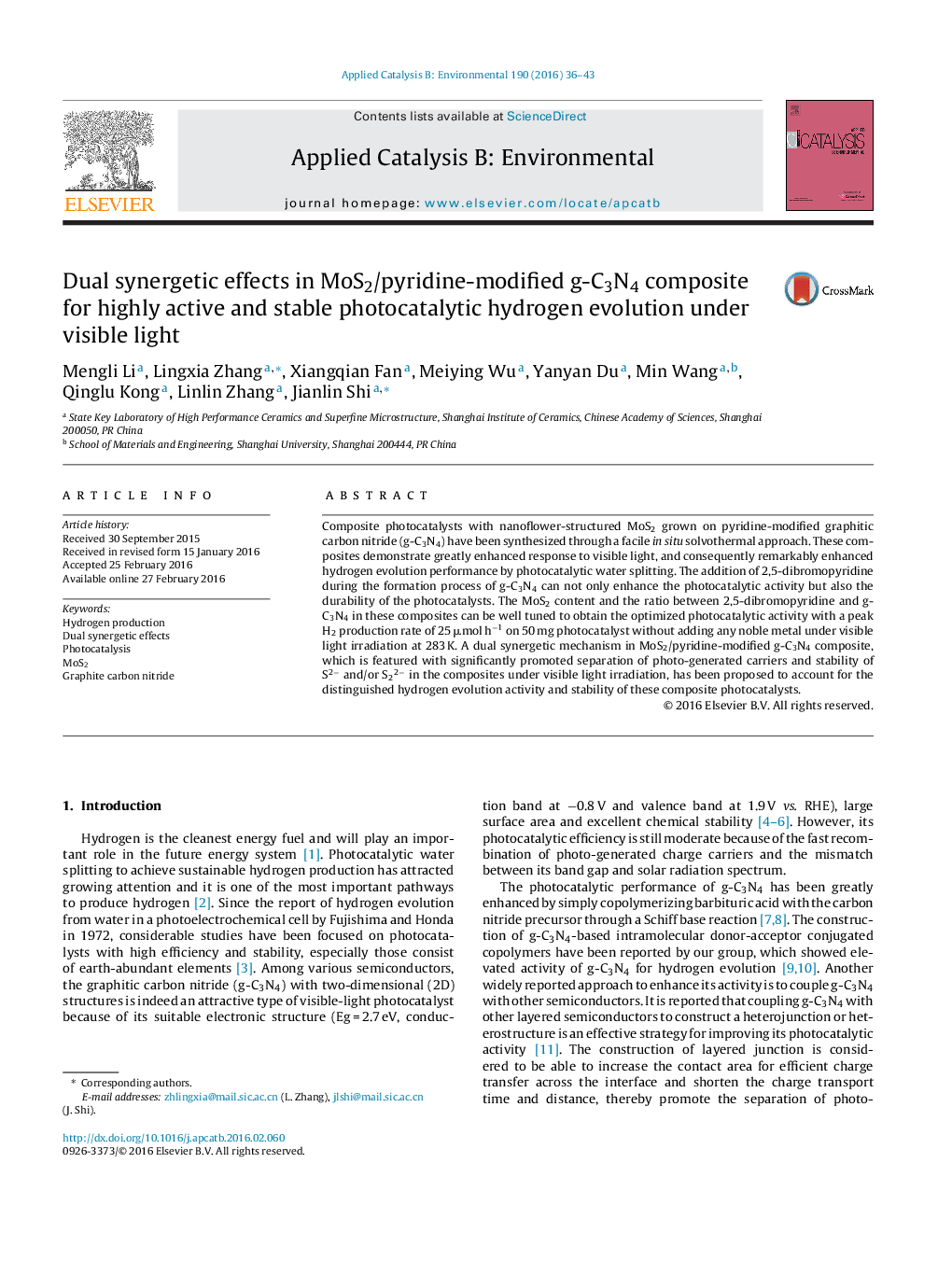| Article ID | Journal | Published Year | Pages | File Type |
|---|---|---|---|---|
| 44924 | Applied Catalysis B: Environmental | 2016 | 8 Pages |
•Pyridine doped g-C3N4 (CN-Py) was synthesized by simple thermal copolymerization.•A series of MoS2/CN-Py with high stability was synthesized by hydrothermal method.•These catalysts showed remarkably enhanced photocatalytic H2 evolution performance.•Other sulfides such as WS2 with high stability can also be fabricated by this approach.•A dual synergetic photocatalysis mechanism on MoS2/CN-Py has been proposed.
Composite photocatalysts with nanoflower-structured MoS2 grown on pyridine-modified graphitic carbon nitride (g-C3N4) have been synthesized through a facile in situ solvothermal approach. These composites demonstrate greatly enhanced response to visible light, and consequently remarkably enhanced hydrogen evolution performance by photocatalytic water splitting. The addition of 2,5-dibromopyridine during the formation process of g-C3N4 can not only enhance the photocatalytic activity but also the durability of the photocatalysts. The MoS2 content and the ratio between 2,5-dibromopyridine and g-C3N4 in these composites can be well tuned to obtain the optimized photocatalytic activity with a peak H2 production rate of 25 μmol h−1 on 50 mg photocatalyst without adding any noble metal under visible light irradiation at 283 K. A dual synergetic mechanism in MoS2/pyridine-modified g-C3N4 composite, which is featured with significantly promoted separation of photo-generated carriers and stability of S2− and/or S22− in the composites under visible light irradiation, has been proposed to account for the distinguished hydrogen evolution activity and stability of these composite photocatalysts.
Graphical abstractFigure optionsDownload full-size imageDownload as PowerPoint slide
